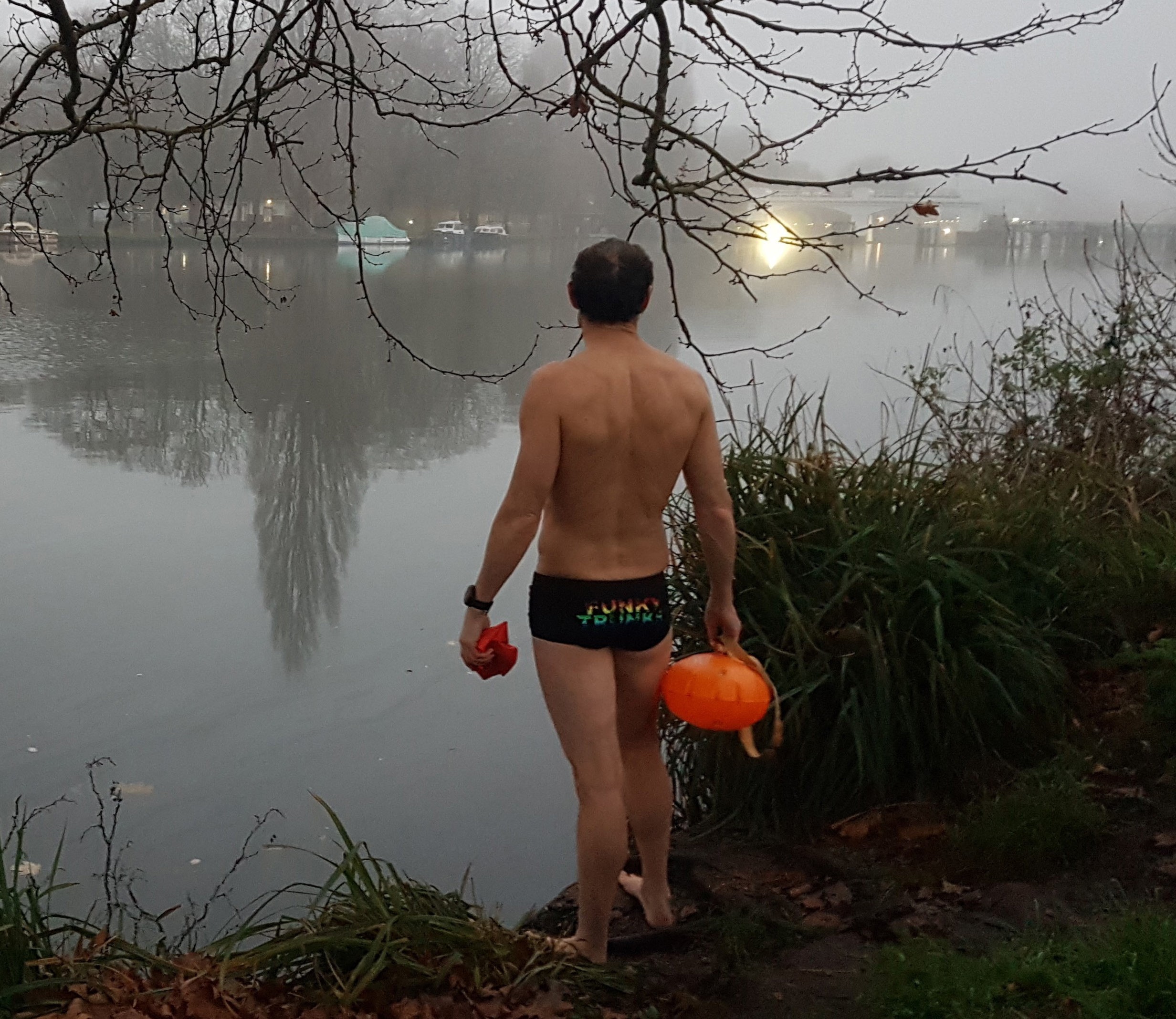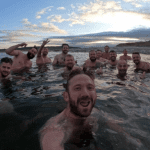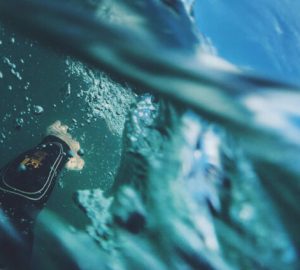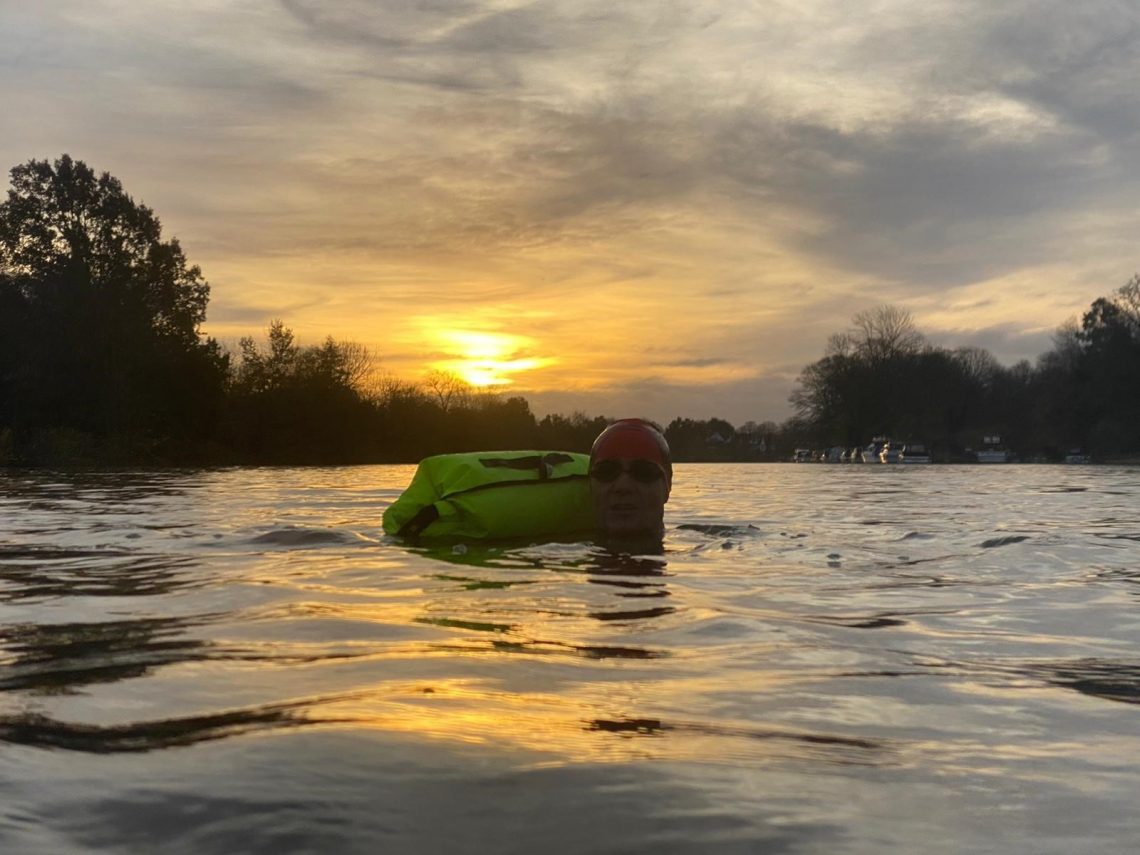
“What happened when I swam for 30 days in a row in the Thames in November”
In winter, I’m a pool swimmer. After a summer of swimming outdoors, I use the autumn and winter months to focus on swimming technique and build a good fitness base. While my colleagues at Outdoor Swimmer delight in cold dips and the onset of winter (and tease me about my cold-avoidance strategies), I used to see little purpose in it as it simply wouldn’t be possible for me to stay in long enough for any kind of fitness workout.
The UK’s second lockdown, which started on 5 November 2020, derailed my pool swimming plans. After sulking for a couple of days, I realised a better approach would be to set myself a lockdown goal and I decided to plunge, without a wetsuit, into the Thames every day while lockdown lasted (plus a couple of days at the end in December to complete the 30 days).
Despite publishing Outdoor Swimmer for 10 years, I’ve mostly avoided cold water swimming, apart from a couple of appearances at winter swimming events. I understood, in a theoretical way, what happens to your body in cold water, but I had very little practical experience. I also usually wear a wetsuit for outdoor swimming, which meant I wasn’t acclimatised to even the moderately cool water of late autumn.
In brief, I was approaching winter swimming from a beginner’s perspective, at least for practical purposes. This is what I discovered.
Cold water shock really does decrease after a few immersions
Cold water shock is an involuntary response your body makes when it is plunged into cold water. The scientists tell us the impact decreases significantly after a few immersions. This is exactly what happened to me. After a few dips, while it still felt bitingly cold, I was no longer gasping for breath when I entered the water. I also tracked my heartrate. At the beginning, it shot up into the 150s, just from stepping into the water. With later swims, it stayed much lower.
The first 90 seconds are the hardest
Cold water shock typically eases after 1 to 2 minutes. When I started, I knew I had to get through this before my heartrate and breathing calmed down enough to swim. It’s also this stage, where your skin is much warmer than the water, that feels the most painful. While the cold water shock effects decrease with exposure, that initial feeling of painful cold never disappeared during my month of cold water swimming, but it became much easier to handle, mentally, when I learned it would only last a couple of minutes.
You become more comfortable in cool water, but it doesn’t mean you’re staying warmer
Over the course of a month, I became more comfortable in the cold, even as the temperature dropped below 8 degrees. I reached a point where the cold water felt good on my skin and I could put my face down and swim. However, a word of warning here. On a couple of occasions, where I felt good in the water, I stayed in a little longer than I planned. Afterwards I was shivering for more than 20 minutes. I clearly wasn’t warmer, although I felt that I was. The scientists who study these things will tell you that swimmers are very poor judges of their core body temperature and are often the last ones to know when to get out.
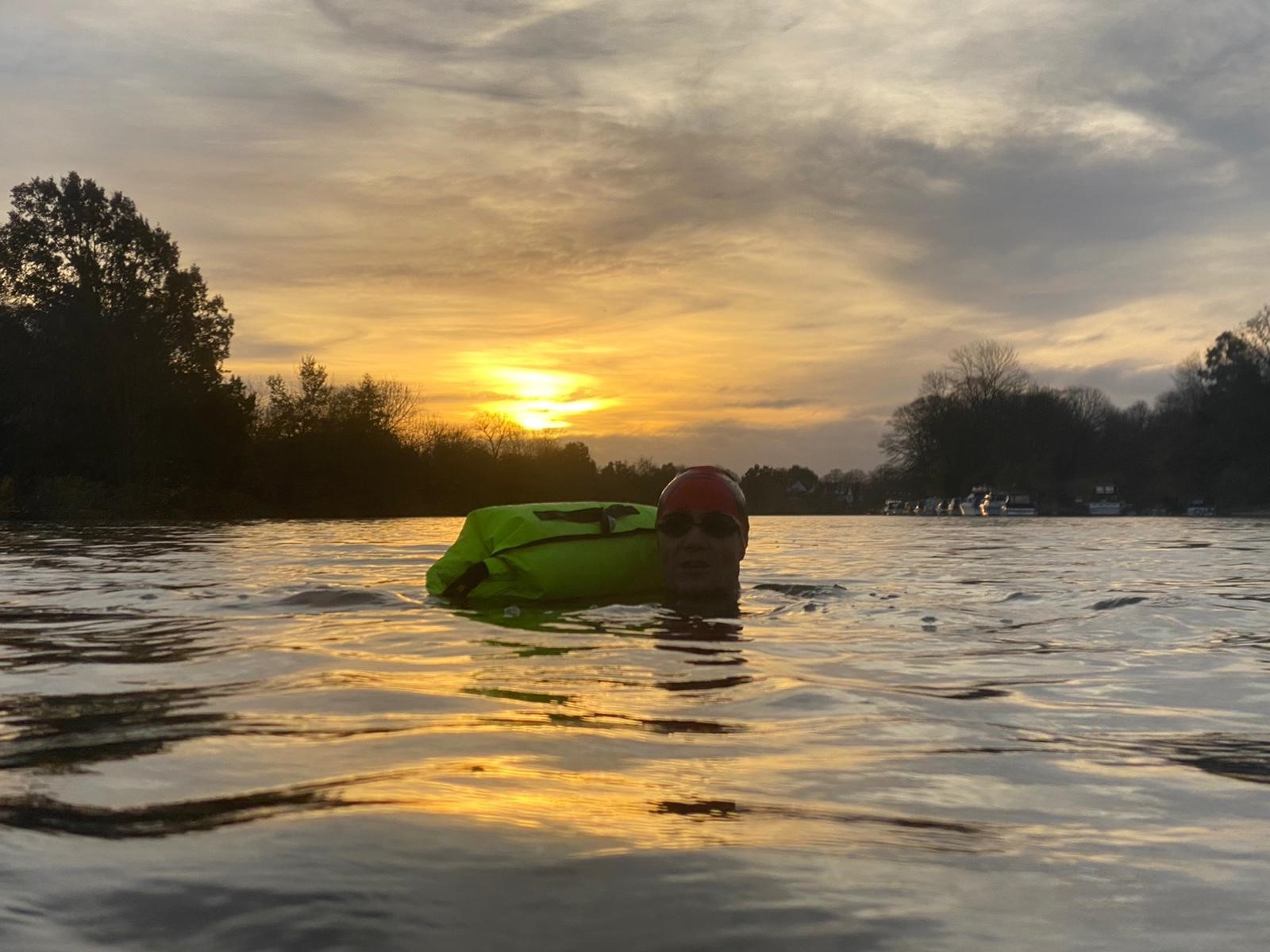
Other people might be able to stay in the water much longer than you. Leave them to it.
While you do adapt to frequent exposure to the cold, the biggest factors in determining how long you stay warm are your body size and shape. When you start swimming in winter, it is very difficult to gauge how quickly you cool down. As the consequences of hypothermia can be fatal it is prudent to keep your first winter swims very short. I time all my swims in cold water, not to try to push my limits but to remind me to get out long before I get close to them, even if other people are staying in longer. I know that I take longer to warm up from a 10-minute swim than other people do from a 20 or 30 minute swim. There isn’t a lot I can do to change that, especially over 30 days, so I leave them to it.
You need more kit for winter swimming
On a hot summer day, you can stroll to the river in shorts and a t-shirt, with a towel rolled under your arm and have a safe and enjoyable swim. Not so in winter. While the basic kit is the same – costume and towel (plus optional hat and goggles) – you need to ensure you have plenty of layers of warm clothing to put on after your swim. Other useful kit includes a changing mat, a flask with a hot drink, gloves, woolly hat, hot water bottle and fleece-lined boots. I’d recommend a tow float for summer or winter swimming, but they are especially valuable in the winter when visibility is worse.
The air temperature mostly makes a difference after your swim
Outdoor water temperatures fluctuate much less than the air temperature. While the water temperature has gradually dropped from around 11 to less than 8 degrees for my swims, the air temperature has varied from zero to the mid teens. I found this mostly makes a difference when dressing after, and in how long it takes to warm up again, rather than in the water. Zip free clothing is invaluable when the air is frosty as your fingers can quickly become painful and clumsy. As an aside, the best sunrises were on the coldest days when the river was steaming.
It’s best to embrace winter swimming for what it is
By December, the water temperature was around 8 degrees Celsius. This is not an ideal temperature for a long distance training session (although I saw some wetsuited, gloved and booted swimmers gamefully trying). Instead, the experience I embraced was a brief, early morning immersion, overcoming my deeply inbuilt reluctance to get cold, enjoying some spectacular sunrises from the water and laughing about how much I shivered after. Oh, and eating cake for breakfast.
You may not want to stop
After 30 days of swimming in the river, my local pool re-opened and I went back for a luxurious swim in 28-degree clear water rather than 8-degree murky river water. It was lovely but the next day, I was back in the river again. I won’t be river swimming every day, but I plan to jump in twice a week, at least until Christmas, and maybe beyond. A quick cold plunge in the morning leaves you feeling good all day. Lots of people say winter swimming is good for your physical and mental health. There’s a theory it might help against dementia. I don’t know if these things are true or not, but I’m happy to take the placebo effect. Besides, it’s fun.
If you want to try
Winter swimming has obvious and less-obvious risks. Please make sure you’re well informed and prepared before you try it, and are abiding by your local area’s current coronavirus restrictions. Check out the dedicated cold water swimming section on our website for more details.
